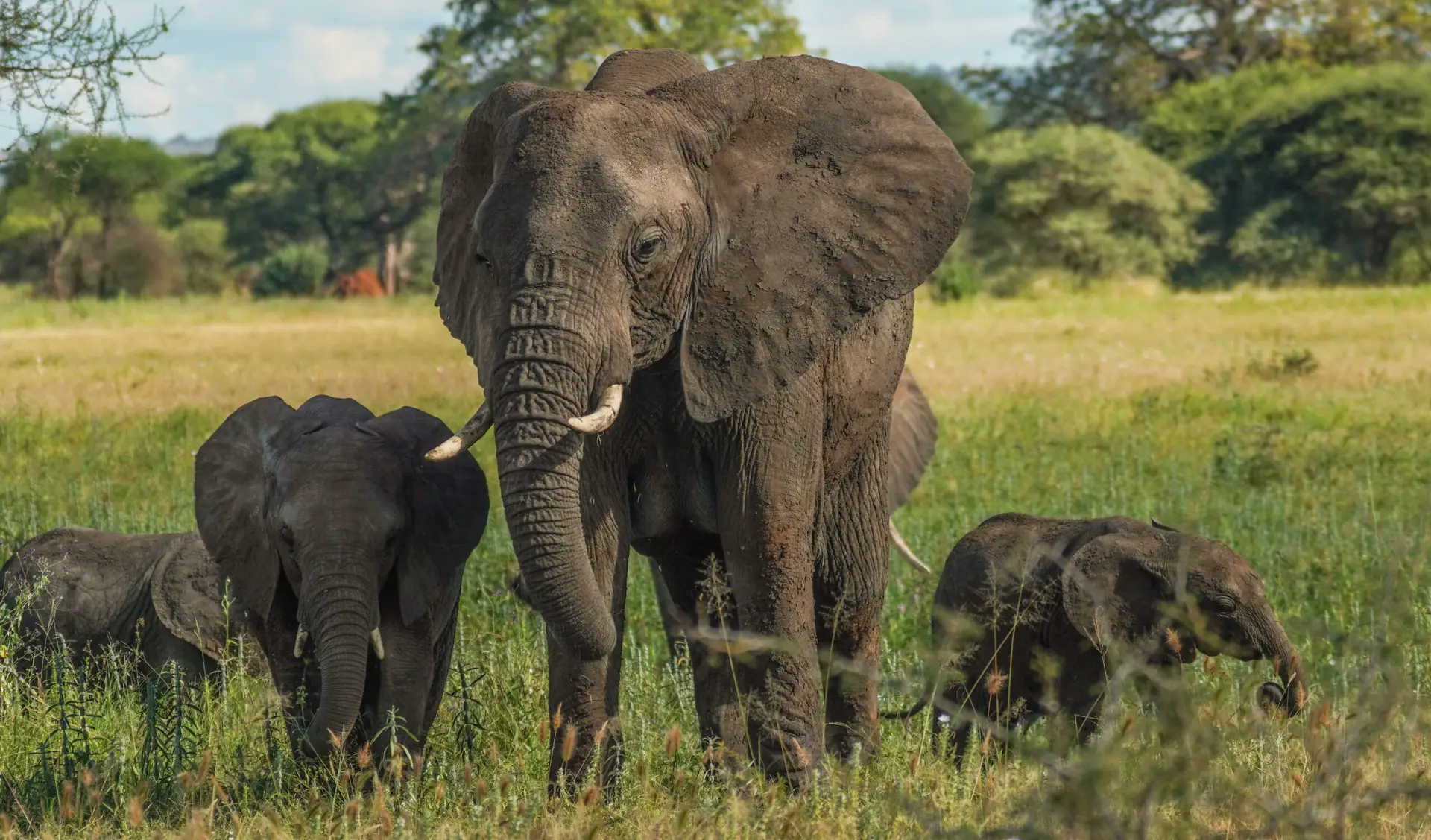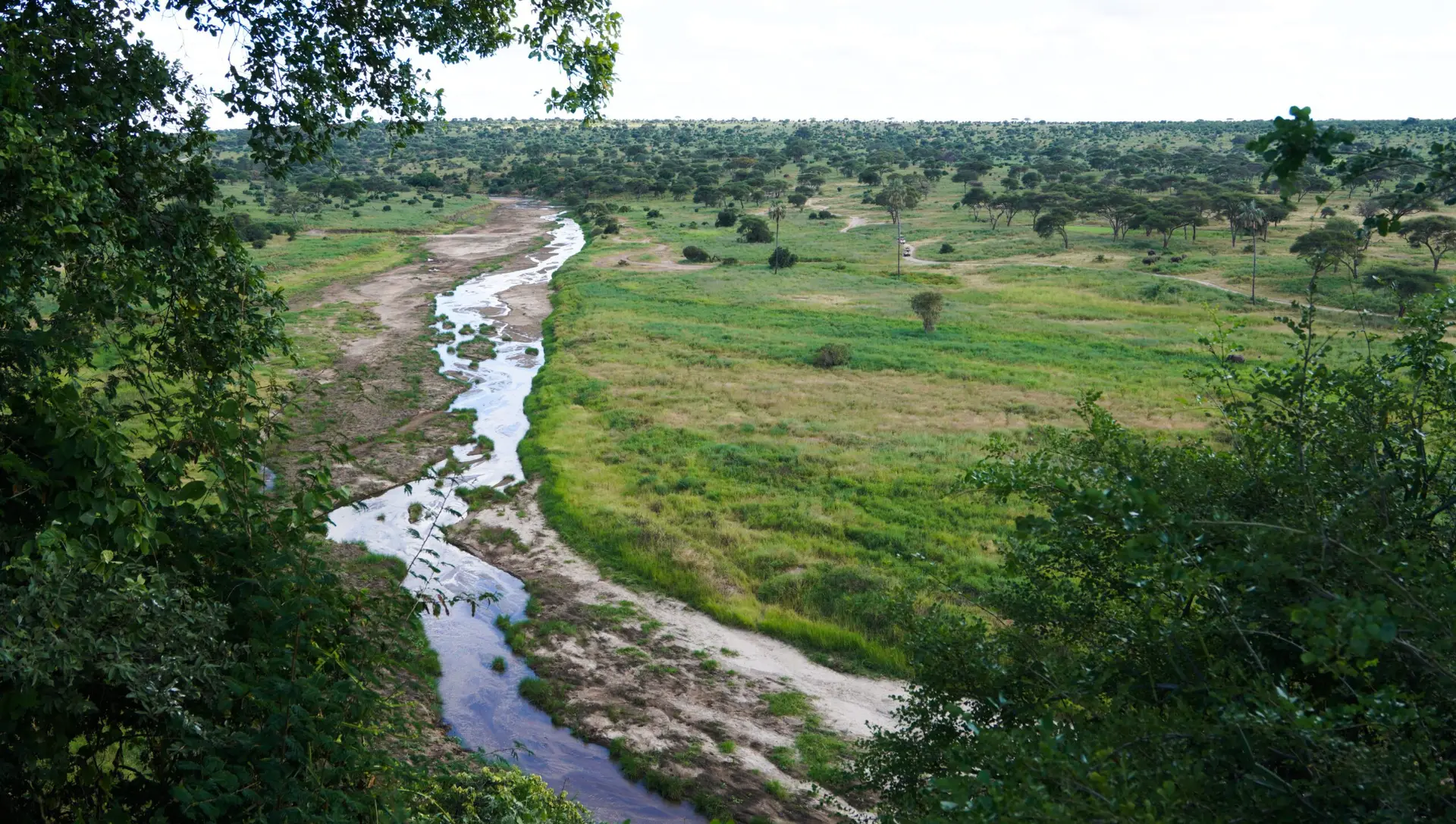
With a total area of 2,600 square kilometers and a rank as Tanzania’s sixth-largest national park, Tarangire is best known for its large elephant herds and seasonal mini-wildlife migration, which sees about 250,000 animals enter the park during the dry season.
It is highly advised that you stay for a few days while on your safari in Tarangire, especially in the south of the park, which offers a less crowded safari experience and gives you the chance to experience an authentically African feel of Tanzania’s countryside.

The park is located between the lakes of the Great Rift Valley to the north and west and the meadows of the Masai Steppe to the south and east, just off the well-known northern Tanzania Safari Circuit.
The permanent River Tarangire, which runs through Tarangire’s northern region, is known as the park’s lifeline, especially during the dry season when the majority of the area is completely dry.
This flows in a northerly direction until it leaves the park and empties into Lake Burungi in the northwest corner. In the south, there are several large swamps that turn into verdant plains during the dry season.

You probably have a lot of inquiries if you’re organizing a safari to Tarangire National Park. It makes sense that you would want it to be the trip of a lifetime, and it will be.
In addition, we are ready to help. If only to pique your interest in taking a Serengeti safari, we would like to give you a little more background information and respond to any queries you may have.
As you read more about your safari trip in the sections below, start creating your bucket list. Find a query unresolved? Please contact us, and we will be happy to help!
The following are automatically Included in your final Price for a Safari we have elaborated more about the Specifics of what is included on what basis on every package
Breakfasts are typically buffet “British” breakfasts at Tanzania Safari Tours. Omelets, potatoes, bacon/sausage (which is more like a hot dog), toast, cereals, etc. are all included.
In Tanzania, lunch typically consists of cold chicken, yogurt, juice, hard-boiled eggs, raw vegetables, and some sort of baked cake or cookie. You will be fed meat, potatoes or rice, and vegetarian meals for dinner.
Breakfasts are typically buffet “British” breakfasts at Tanzania Safari Tours. Omelets, potatoes, bacon/sausage (which is more like a hot dog), toast, cereals, etc. are all included.
In Tanzania, lunch typically consists of cold chicken, yogurt, juice, hard-boiled eggs, raw vegetables, and some sort of baked cake or cookie. You will be fed meat, potatoes or rice, and vegetarian meals for dinner.
Travel with Norbert Safaris advises visiting Tanzania throughout the year. However, the dry season (late June to October) offers the best climatic conditions, with clear skies and low humidity, making it the best time for safaris in Tanzania or for climbing Kilimanjaro or other mountains.
Due to its proximity to the equator, Tanzania experiences seasonal temperature variations. Although it is usually warm here, temperatures can drop sharply during and after rainstorms as well as at night. The coastal region experiences year-round heat and humidity.
Yes! With us, you can undoubtedly create a custom travel itinerary. We offer private Tanzania safari tours that are tailored to your requirements. You can consult our travel specialists for help creating the ideal Tanzania safari itinerary.
They can advise you on the locations of your choice. We also give our clients’ safety and cleanliness the utmost attention. When booking a safari, you can request the food of your choosing based on your suggestions.
You can most definitely bring your kids on safari. However, you should be aware that most national parks and lodges have a minimum age requirement of between 3 and 12 years old. You must confirm the age requirements at the various locations on your itinerary with our travel agents because children are not permitted in any safari activities.
Norbert Safaris © 2024. All Rights Reserved